William Lambe becomes a Clothworker
1568
By the 1560s, Lambe had become a skilled businessman and acquired large swathes of property. In 1568, he became a member of the Clothworkers’ Guild and went on to become the guild’s master a year later.

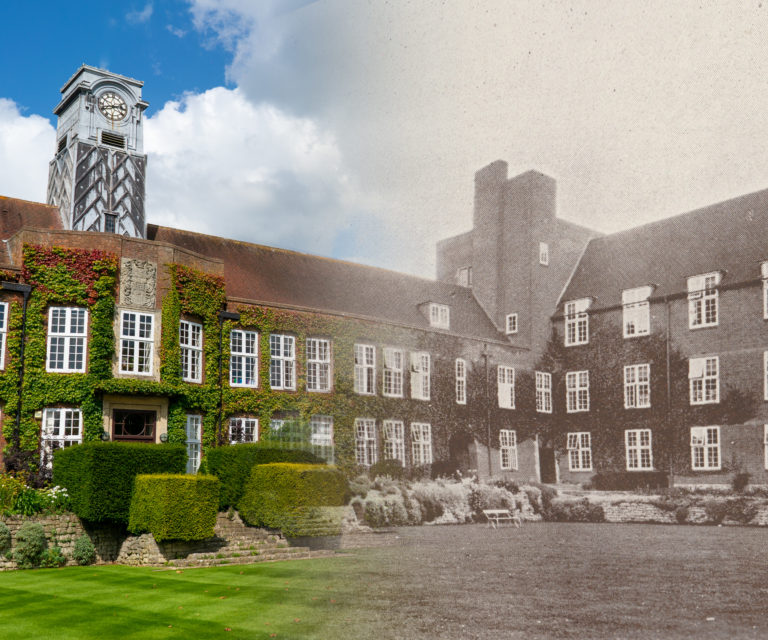
Since it was founded in 1576 by William Lambe, a local benefactor, Sutton Valence School has been part of Sutton Valence village. Lambe was a member of the court of King Henry VIII, a chorister in the Chapel Royal and a Master of the Worshipful Company of Clothworkers. He funded many social projects, including Lambe’s Conduit in London, which helped to remove sewage from the streets.
In Sutton Valence School, he wanted to provide free education for the boys of the village. Now a thriving co-educational independent school, the past has provided a rich history and tradition and a wealth of expertise that still inhabit so much of what we do today, especially the Christian values of love and community.
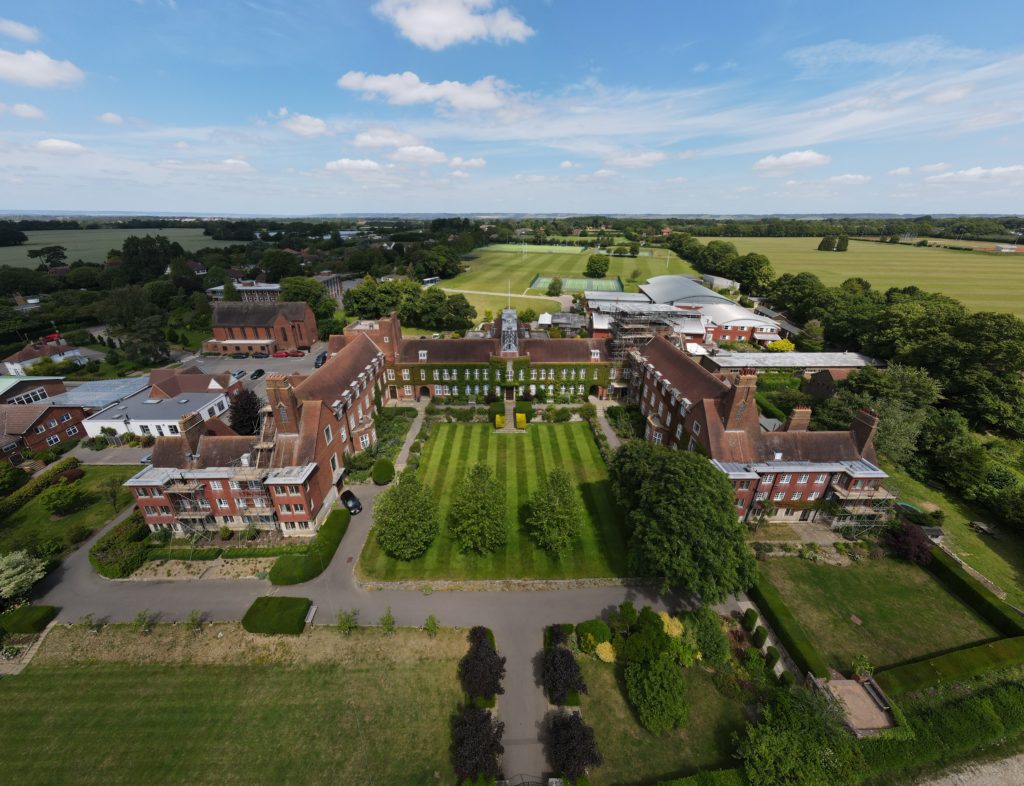
The Clothworkers’ Company, which had managed the School since its inception, handed governance of the School to the United Westminster Schools Foundation in 1910. Two years later, the burgeoning student roll required an expansion of the existing facilities and, accordingly, the School purchased land above the village. The subsequent construction of ‘Main School’ with its two boarding houses and stunning views overlooking the Weald of Kent has remained the heart of Sutton Valence School ever since.
In the century that has followed, the School has gone from strength to strength; becoming co-educational in 1982, incorporating Underhill School, now Sutton Valence Preparatory School, in 1994 and opening our sister school HIKSVS in Tianjin, China in 2017.
Our near 450-year history has undoubtedly guided and moulded the School into what it is today. We pride ourselves on being forward-looking but firmly rooted in our traditions, retaining many of the customs that have been established over the centuries. As such, our reputation is built not just on the quality of our educational provision, but on the continuation of the legacy of our founder, William Lambe.
15
00
1568
William Lambe becomes a Clothworker
Read More1568
By the 1560s, Lambe had become a skilled businessman and acquired large swathes of property. In 1568, he became a member of the Clothworkers’ Guild and went on to become the guild’s master a year later.
1576
The School is founded.
Read More1576
Lambe sought to set up a free Grammar School in Sutton Valence and, knowing his health was deteriorating, requested that the Clothworkers’ Company take care of the School after his death using his funds. On 13th March 1576, it is written that he “caused the draft of a device to be read to the Court of the Clothworkers’ Company, of an annuity for which he proposed to give to the Company an annual yearly rent of £4 to bear the charges of the Master and one or two of the Wardens once every year after his decease to go to Sutton Valence to oversee a ‘free Grammar School’ there by him lately erected by the Queen’s letters patent".
1580
The School Opens
Read More1580
Despite being founded four years earlier, the School did not open until 1580. Sadly William Lambe had already died on 21st April that year, so he did not get to see the School operating.
1583
The School Takes Shape
Read More1583
Each day, the pupils will have assembled at the School at 7am in summer and possibly half an hour later in winter to save the ‘firing of candles’. They would be summoned to the School by bells. The first bell used to be rung 'to get up' and the second rung a little later to 'leave for School'. Finally, the third bell was rung 'to be in School'. The curriculum consisted of Latin grammar, perhaps a little Greek if required; Religious Knowledge and some writing, particularly for the younger boys. The ages of the boys will have ranged from six to 15. The day commenced with morning prayers, and apart from a couple of hours from 11am until 1pm for dinner, teaching will have continued until 5pm in the summer and 4pm in the winter. Evening prayers would be said before the boys were sent home.
1584
Clothworkers’ First Visit
Read More1584
Three Clothworkers were appointed to ride to Sutton Valence and, taking a 'learned man' with them, examine the scholars at Mr Lambe’s free school. Even then, the cost must have been greater than the £4 that Lambe set aside for the purpose.
1586
Headmaster’s House Built
Read More1586
Sir Rowland Hayward, one of Lambe’s executors, was asked if he would contribute anything towards the building of a house at Sutton Valence for the Schoolmaster. No record is found of his reply - but a house was built shortly afterwards. Lambe had built the main School building, but no accommodation for its headmaster in the village.
16
00
1602
Early Challenges
Read More1602
What a monstrous task it must have been for Robert Sharpe in the early days. With only a few well-motivated private pupils to teach, the remainder of the School were Foundation pupils (sons of local people being taught at the Clothworkers' expense). These pupils might or might not attend the School according to the time of year, since they might be required to help at home (e.g. harvest time). Education was a charitable deed that they perhaps feIt was 'optional' according to their own particular requirements of each day
1607
Local opposition
Read More1607
Robert Sharpe’s health deteriorated during the first decade of the 17th century and his sight became very poor. The local vicar, and others jealous of his power, tried to have him removed. A tribunal found that Sharpe was quite capable of carrying out his duties, however, and he continued until he died in 1619.
1608
School rules published
Read More1608
From the Book of Deeds (School rules circa 1608) it was dictated that "The Master shall not be a common haunter of taverns or alehouses". It also stated that "No child shall be admitted or taken into the Grammar School unless he can both read well and write indifferently".
When it came to religion, "All scholars dwelling in the School or town upon every Sabbath and holiday resort in due time to divine service. The Master do every Monday morn call to account all such of their scholars as either were absent from Church or come tardy to it or otherwise use not themselves reverently there, every of them having a prayer book in Latin or English".
1619
Robert Sharpe's death
Read More1619
The School's first Master, Robert Sharpe's deteriorating health finally gets the better of him and he dies in 1619 to be replaced by Job Davenport.
1638
School's reputation grows
Read More1638
Before 1640, the Court Orders of the Clothworkers’ Company reports that "The County bring their children thither (Sutton Valence) to be taught". This shows that by sending their children to the School either to board in the village or with the Master, the School's reputation was strong and the School was known about over a large area of land.
1645
The Non-arrival
Read More1645
Henry Bradshaw was elected Schoolmaster by acclaim of local inhabitants. After his appointment, he wrote to say he could not accept the post without incurring the (unspecified) displeasure of some of his best friends.
1645
Thomas Philpot dismissed
Read More1645
The townsfolk of Sutton Valence did not like Thomas Philpot (Headmaster). They said “he does not demean himself as he should and thereby the School is out of credit and good repute. He is seen as debauched in his drink!” Responding to the accusation, Philpot makes a weak and slender answer, not being able to deny such an apparent truth. Thereupon he is dismissed.
1645
More local opposition
Read More1645
Thomas Carter in his turn resigned before he had officially taken up his post because he found the inhabitants of Sutton Valence unwilling to have their children taught in Latin. They wanted 'useful' subjects such as English, Arithmetic and History to be taught. Latin was needed only for those going up to university or to 'important' positions in the Civil Service of the day. Local pupils were aiming for commerce and business.
1658
Samuel Garrard dismissed
Read More1658
A report of the visitors (deputation of the Clothworkers' Company made in 1658) informed that the School was in decay and its pupils and the townsfolk were discontented. Garrard was asked to leave. His departure was delayed because of the advanced state of pregnancy of his wife. Even before Garrrad had gone, Sureity Nichols applied for his post. He was awarded the position and arranged that his son, Benjamin, work alongside him as 'Usher' (second master).
1660
Keeping it in the family
Read More1660
Benjamin succeeded his father (if indeed his father ever took office). Records of this time give no mention of Sureity and refer to Garrard as the previous master.
1676
The Centenary of the School
Read More1676
The first 100 years of the School's life proved quarrelsome for the Clothworkers' Company. Lambe had not made provision for a dwelling for the Master and they had to find the cash for this. They also had to fund the almost unending need for repair and maintenance of the buildings and gardens. Right from the beginning, the local people wanted English (and 'commercial' subjects) to be taught instead of, or alongside, the traditional Classics.
The Clothworkers were remote from the action and found the place difficult to manage, particularly on receipt of (sometimes mischievous) letters from locals about the 'state of health' of the School. They derived virtually no income from their investments. Their funds provided for the free education of their nominated Scholars and they paid for a few local boys to attend as scholars also. Income from extra scholars went to the Master for his efforts.
1679
Richard Nicholls is dismissed
Read More1679
Richard Nichols was dismissed (1676) for his neglect of his pupils, "to the disparagement and almost ruin of the School".
Nicholls disputed his dismissal and hung on for another three years despite Edward Peverell being appointed in his place. During this period it was discovered that Peverell had supplied a false marriage certificate and therefore lost his chance.
1681
Richard Forster - The first 'Golden Age
Read More1681
Forster came to Sutton Valence from Tonbridge School, where he had been Second Master. He had only taught Classics there, and it was his intention to do the same here. However, he had not reckoned with the desires of the townsfolk (whose dislike of the Classics was so strong) and the governors who were anxious to please the local people. From that day to this, the teaching of English has been part of the Sutton Valence curriculum, though not taught by Forster during his tenure - he let his deputy do that.
1685
Cambridge Connection
Read More1685
One of Forster's pupils was Francis Robins, who in 1685 went up to Cambridge, from where he took holy orders and eventually founded two scholarships for Sutton Valence boys to go to Cambridge. During Forster's time a stream of boys went up to Oxbridge.
1698
First Old Suttonian Headmaster
Read More1698
By the time Forster left, the School was flourishing. As well as the foundation scholars that the governors provided funds for, he had been at liberty to board as many private pupils as he wished, either in his own house or elsewhere in the village. This meant that the School roll was far healthier than it ever had been, with around 60 boys attending by the mid-1690s.
Forester was replaced by John Nicholls, who was an Old Suttonian and ran the School very much to the satisfaction of the local people (concentrating more on the commercial subjects than the Classics). Indeed, no boys went up to Oxbridge during his tenure - a significant change from the years of his predecessor.
17
00
1712
Return to the Classics
Read More1712
Upon taking up his role as Master in 1712, Thomas Price was instructed that "if the Schoolmaster teaches reading, writing and Latin, he shall have the full allowance of £30, being the salary of both the Master and the Usher. If there are too many pupils for him to teach properly, then an Usher must be chosen to teach reading and writing, and the Master will teach Latin; except when the Usher is absent, and then the Master must instruct all the scholars."
1723
Ecclesiastic Leadership
Read More1723
Culpepper Savage, the local vicar, became Master. Savage immediately asked the Clothworkers to pay for stabling and a barn. He had two parishes and the School to look after. He ordered a great deal of repair work on the School, especially the garden walls above the main School building.
1745
The Clothworkers impose themselves
Read More1745
The Clothworkers began to rebel against the villagers. Beginning with the appointment of John Clendon (who replaced Culpepper Savage), they wrote out a new job description, and this was much more stringent. It dictated that the Headmaster must expressly teach Grammar (Latin) and also teach, or cause to be taught, reading, writing and arithmetic, and must strictly adhere to such requirements (or resign, or accept notice) and he had to enter into a bond of £500 to observe these requirements. Clendon left after only a year.
1746
More upheaval
Read More1746
John Clendon's replacement, John Russell, then also left within a year of taking up his post, moving to Maidstone Grammar School.
He was replaced by Joseph Hardy, who would go on to become the longest serving Master at the School, lasting 40 years in the role. Not only did Hardy have to enter into the £500 bond introduced recently, but had to give six months notice of his intention to leave. The Clothworkers were beginning to learn how to do things!
1770
Period of stability
Read More1770
During Hardy's time at the School, John Rayner (by trade a shoemaker) served as Usher. Like Hardy, Raynor would also go on to become the longest serving member of staff in his respective position - lasting 25 years.
Rayner did most of the work towards the end of Hardy's career. After all, there were very few pupils and they were all foundation scholars (from the local village) and did not learn any Latin.
1781
Clothworkers' Unsatisfactory Visit
Read More1781
During the late 1800s, the Clothworkers’ Company chose not to keep up with their four-yearly visitations, leaving Hardy very much to his own devices. Therefore, when they finally visited in 1781, they were not pleased with that they discovered.
The visitors were sorry to inform the Court that "the School, one of the earliest institutions of its kind, founded and endowed in the dawn of Reformation for the sole purpose of removing the ignorance of those times and bestowing a liberal education on the then and future rising generation... no longer answers the public spirited intention of its worthy founder, there being no boys sent to it to receive such education as he had planned for them". They were of the opinion the infirm Headmaster would likely never be able to bring the School back to Lambe's design.
Sutton Valence was not the only grammar school to suffer decline. Many others, some with large endowments, were similarly empty of scholars but full of well paid masters.
1786
The end of Hardy
Read More1786
Eventually Hardy left his post in 1786. Sadly, under his leadership, the School had gradually declined to such an extent it became, by the end, nothing more than a local village school. He was replaced by John Griffin.
1787
Griffin's Early Promise
Read More1787
Initially John Griffin had good reports and the School did well under his leadership. A visitation of the Clothworkers’ Company in 1787 was able to report "eminent satisfaction to see that ancient Seminary of Classical learning rapidly emerging from the deplorable obscurity into which it had sunk. The principal farmers and tradespeople in the neighbourhood were become anxious of having their sons admitted to the Foundation".
1789
Griffin Forced to Leave
Read More1789
Unfortunately, Griffin was in debt. School mastering did not pay sufficient wages to keep up with his expenses, so he had to resign. He escaped his creditors by joining the Navy as chaplain.
1790
Positive Reports
Read More1790
John Griffin was replaced by John Bridgeland, who may have become a good Headmaster, but unfortunately his opportunity to do so was taken from him when he was murdered by highwaymen on his way back to School from a visit to Maidstone.
His replacement was John Ismay whose appointment coincided with the bond being increased to £2,000! There was also a tightening up of the inspection visits. In addition, samples of work had to be delivered regularly to Clothworkers’ Hall. Attendance registers were also scrutinised twice a year and local clergymen were asked to visit the School and report back.
18
00
1804
Window Tax
Read More1804
The Clothworkers' Court declared that certain, unspecified, windows in the Schoolmaster's house had to be bricked up to reduce the 'window tax' to £9 from £16. The Napoleonic War was at its height and everything was very expensive.
1807
Ismay's Impact
Read More1807
The visitation of 1807 found that "all the scholars made a very decent, and some a very respectable appearance". They went on to say "The School is conducted in a very creditable manner".
Ismay had effectively been running two schools in one. On the one hand he had to teach the 24 foundation boys (aged six to 14) English, arithmetic, writing and, when necessary, Classics. On the other hand, he had 50 of his own private pupils, teaching mainly the Classics. He was responsible for 30 of them as boarders in his own house or in the village.
The Clothworkers’ Company was not really interested in the number of his fee-paying pupils, although they must have realised that these were really the backbone of the School both helping to keep it going and giving it a good reputation. Their interest was in pursuing Lambe's legacy and using their money to educate a number of local and Clothworkers' children.
1816
Death of Ismay
Read More1816
Ismay was a great success and it is a tragedy for the School that he fell dead of apoplexy during a church service in 1816. His replacement, James Buckland came from Tenterden, where he had been running his own private school. The Clothworkers increased the number of the Foundation Scholars to 30. These, according to Buckland, "for the great part they come from the lower classes of the people". He was paid £30 for educating these boys and made much more from housing and teaching the 30 or so boarders he added to the roll.
1820
Infrequency of Clothworkers' visits
Read More1820
The Clothworkers stuck to Lambe's bequest (£4 per year for a visitation to make sure that all was well with the School). Inflation meant that they allowed the money to accumulate and visited only when the funds had risen sufficiently to pay for a trip to the countryside! The stagecoach to and from London to Maidstone took about four hours to make its journey, and there were as many as ten per day. Between Sutton Valence and Maidstone the journey was usually made by saddle horses and gigs, they being less expensive than the coach.
George Stephenson, the famous railway engineer, proposed a Dover to Maidstone line but this was postponed because of the local 'river lobby' who preferred using the Medway. When the railways did come, Sutton Valence missed its chance. The coming of the railways caused the decline of the stagecoach and Sutton Valence, again, became rather less well-connected to the rest of the world.
1824
Lambe's Garden
Read More1824
In 1824 the Lambe's Garden was presented to the School by Sir John Filmer.
1829
The Rugg era
Read More1829
In 1929, Buckland left and was replaced by John Rugg Jnr who employed his father, John Rugg Snr to teach alongside him. He also found space for another two teachers as well - greatly increasing the staff provision. Rugg Jnr was dynamic and highly respected, however, he, too, was to die very suddenly at a young age. His father carried on the good work, ably supported by his second son, Lewis.
1835
School in Crisis
Read More1835
The death of Rugg and the events of the preceding century led to much soul-searching by the Clothworkers’ Company. The School was designated a free grammar school - but to those it educated free it taught no grammar (Latin). Those who were educated privately (paying tuition fees) were taught Latin. The Clothworkers began to realise that if they continued to try to run the School as its founder intended and on the money he had left to do it, then sooner or later it would have to close. If they allowed the School to flourish by taking in more fee payers thus becoming one of the new 'independent' schools, they would be going against the wishes of the founder. This too, would cost a lot of money, especially if they wished to continue assisting local boys to attend as free scholars.
1839
A Change of Direction
Read More1839
The Clothworkers’ Company decided that they must change the School from a free grammar school to an Independent school. Further, it must become wholly academic, rather than only partly so. To this end, they were prepared to add another Oxbridge scholarship to the existing two Robins Exhibitions.
There would be 12 sons of Clothworkers and another 12 boys recruited by the Headmaster, all to be boarders living with the Master, and all learning the Classics. In addition, 24 boys were to be accepted free, from Sutton Valence and the neighbouring villages as foundation scholars, and a further 12 boys as day scholars, not on the foundation, as fee-paying pupils.
In addition, the establishment of Sutton Valence National School in 1839 - very close to the site that is the present primary school, relieved a lot of the issues of the past 250 years. This new school, teaching Bible study, writing, sewing, some English and elementary arithmetic, and charging a nominal penny per week put a stop to the bickering of the local people. The Clothworkers Company decided that no-one should be admitted to their school under the age of 10. This also allowed a concentration on more academic studies.
1840
Annual Prizes
Read More1840
Annual prizes were established as a result of an annual visit by the Clothworkers in 1840. The prizes were to be books bound in calf, lettered on the back with the company's arms, and a proper inscription placed inside each book.
1848
Death of Goodchild
Read More1848
After the death of Cecil Goodchild (Rugg Snr's replacement) at only 38, the governors forbade any successor to hold a church post as well as being Headmaster. It was thought the hardship of doing both jobs simultaneously had contributed to Goodchild's early demise.
1850
Milligan's Legacy
Read More1850
Goodchild was replaced by Henry Milligan who annotated the admissions register with critical notes on the capabilities of some of the boys he had inherited from Goodchild's ministrations. Milligan's time at the School is controversial; some thought he was responsible for the decline of the School, others that it was only by his efforts that the School did not close earlier.
1860
School Closes
Read More1860
The School was eventually forced to close as major re-building work took place on the site. The result, the current Lambe's building, was eventually opened in 1864 by the new Master, James Kingdon.
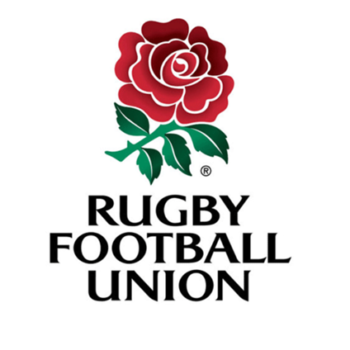
1874
Rugby Football Union Membership
Read More1874
The School became a member of the Rugby Football Union, becoming one of the first schools to join. Around this time, regular fixtures in Rugby and Cricket began against other schools, the village and club sides.

1883
Purchase of The Upper and Cricket development
Read More1883
The Upper was purchased and used as a games field, replacing the field above the School next to the village recreation field (now the Quad). The Governors granted the sum of £500 for the building of the pavilion and the levelling of the ground. Initially, it contained two grass tennis courts as well as space for a rugby pitch and a cricket square.
Sport at the School developed significantly after it reopened in 1864. Cricket in particular thrived. In 1883, M R Cobb took 309 wickets in the Cricket season; he went on to be one of the leading lights in USA Cricket - at that time a very important sport on the eastern seaboard. Similarly, in the same season, Crallan scored the first SVS schoolboy century - he went on to play for his college at Cambridge.
1893
Sporting Success
Read More1893
With sport now firmly established on The Upper, the School continued to excel. In the 1893 season, the 1st XV won 12 out of 15 matches, scoring 277 points to 74. In the same year, the 1st XI Cricket team won 11 out of 12 matches played.
1899
Old Suttonians in the Boer War
Read More1899
The outbreak of the Boer War saw a number of Old Suttonians caught up in the conflict. Information from OS suggests that as many as 28 of them fought in the conflict and six were killed. A goodly number of OS had, before the conflict, emigrated to South Africa and it is believed some of those also fought but, having lost contact with the School, did not let us know.
Those known to have died were A J Corlett, G F Hayward, F A Hurlbatt, J Rowlands and H P Woodham.
19
00
1901
Introduction of Hockey
Read More1901
Hockey was introduced as a new sport at the School, but it was very quickly abandoned. It was seen to have prevented 'proper' progress in Rugby and Athletics.
1902
The School moves to Margate
Read More1902
Extensive repairs to the School buildings, rendering them ‘temporarily unfit for habitation' were needed and could not be completed in the Christmas holidays. Temporary quarters were obtained in Cliftonville and the whole population of the School moved there for three weeks.
1909
First International Cricketer
Read More1909
D W Carr (1885-1890) played Cricket for England against Australia. He was a 'googly' bowler and played particularly well. He later declined to go on tour to South Africa later because it would have prevented him from undertaking his School mastering duties. He continued to represent Kent (in the School holidays).
1910
Westminster, St. Margaret's and Centre Block built
Read More1910
In 1910, the Clothworkers’ Company passed the School over to the United Westminster Foundation and the School expanded by the construction of a large building above the old School.
This new building incorporated two new boarding houses - Westminster and St Margaret's, as well the additional teaching space in what is now referred to as Centre Block.
The site had previously been leased to the School by the Filmer family as a Cricket pitch, before the acquisition of The Upper in 1883. It was purchased outright by a Master of the Clothworkers’ Company, W E Horne, and presented to the new governing body.
1918
Counting the cost of war
Read More1918
A high proportion of Old Suttonians were killed or wounded, but, miraculously, no-one who had attended the School since 1910 suffered severe physical harm. The School could move forward unfettered by the remembrance of contemporaries’ loss, though the masters, with longer experience of the School were left to grieve. Headmaster Holdgate re-started the task of bringing the School into the 20th century and determinedly set about erecting a chapel in memory of those that died.
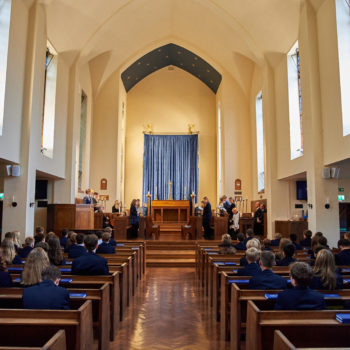
1929
The Chapel opens
Read More1929
The School Chapel was built as a memorial to the Old Suttonians who died during the First World War.

1934
Fives courts Opened
Read More1934
With the popularity of Fives increasing, a new set of Fives courts were built. At the time, they were acknowledged as being amongst the finest in the country. They were eventually demolished and replaced with the current Mathematics and ICT Block.
1936
Holdgate Converted
Read More1936
With the Fives courts completed, attention turned to the old almshouses in the village. In 1935 they were converted into a boarding house initially called Bentley's and then Holdgate. The building would eventually be redeveloped in the late 1990s and converted to staff accommodation; currently housing the School's Bursar.
1945
Counting the cost of another war
Read More1945
School numbers shrank because of the danger of the War. The Chapel and School generally was blacked out at night. The School Fire Team met regularly to practise their skills in the event of attack. The swimming pool was their scene of operations - it provided the water. Only one doodle-bug struck - on BM - causing damage to many windows. Schoolboys spent a lot of time raising money for a Spitfire, and helping local farmers with their harvest. Some were specialists at tractor-driving.
1947
World War II Memorial
Read More1947
A memorial to those killed in the Second World War was unveiled in the Chapel by Archbishop Fisher of Canterbury.
1950
Almshouses Converted
Read More1950
The Almshouses (those adjacent to Lambe's quad) were converted into classrooms. Originally they had been dwellings for old people from the village and then, after they had fallen into disrepair, they were used as a vegetable store for the School. They now house the Juniors’ day rooms.
1961
Further Expansion
Read More1961
By the early 1960s, the expanding School had already outgrown the Chapel. The building was therefore extended with side aisles and a new porch. Next to it, the School also built a new boarding house, Cornwallis, together with a new Refectory, Common Room and staff accommodation block. The former ‘maid’ service that operated in the old dining hall (now the Library in Lambe's) was replaced by a self- service cafeteria.
1976
Quartercentenary celebrations
Read More1976
The School celebrated its quartercentenary in style with a royal visit from Her Royal Highness The Princess Alexandra. A weekend of cultural celebrations occurred around the School.
1980
Groves Hall Opens
Read More1980
Music at the School had previously been taught at various locations around the site but it was determined that a purpose-built facility was needed. It was named after Old Suttonian, Sir Charles Groves CBE (1932 W), who was present to open it alongside the recently retired Headmaster, Michael Ricketts, who had been instrumental in its construction.
1981
First Sponsored Walk
Read More1981
1981 was declared The Year of the Disabled and in keeping with that, the School organised a major sponsored walk. Whilst individual iterations of the Sponsored Walk had happened before, the tradition of the current walk started in 1981. It involved the whole School walking for 30 miles, which raised over £12500 for a variety of charities. Such walks have been held regularly ever since.
1982
Computers Introduced
Read More1982
With technology rapidly advancing, computers were first introduced to the School in 1982. With a cassette player and a monitor attached to a processor, 256 megabytes of memory allowed massive advances in computation and opened up a whole new way of teaching.
The year also saw the opening of Gulland Hall as the School's new Art centre. The former church had been given to the School by the Gulland family.
1983
Co-Education
Read More1983
The School becomes co-educational as girls are admitted for the first time. The initial intake of female students was 18, but grew very rapidly over the course of the next two years.
1986
Sutton House Built
Read More1986
As the number of girls at the School increased, the need for a girls boarding house grew. The decision was taken to extend above the Sanatorium, effectively creating a quad around Prefects’ Lawn. The new girls’ boarding house was named Sutton.
Further work also took place behind the existing Science Block to create additional space for Science but also for ICT, which was becoming more popular.
1996
Merger with Underhill
Read More1996
The United Westminster Foundation took on the management of Underhill Preparatory School. During the course of the next few years, Underhill and Sutton Valence School moved towards merger. Underhill became the preparatory school of Sutton Valence School in 1996.
20
00
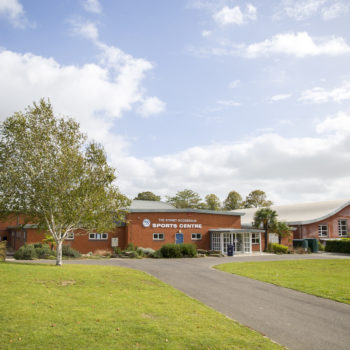
2001
New Sports Centre
Read More2001
As Sport at SVS developed, so did the need for greater facilities. In 2000, work began on a new sports hall. The existing Sports Centre (now referred to as the Old Gym) was cut in half and a much larger structure was built in its place. The new building was named the Sydney Wooderson Sports Centre in recognition of the School's most famous athlete.

2006
Maths and ICT Block
Read More2006
With the Sports Centre complete, efforts turned to the development of improved ICT facilities and a designated Mathematics centre. The now largely unused Fives Courts next to the swimming pool were demolished and the new block constructed.
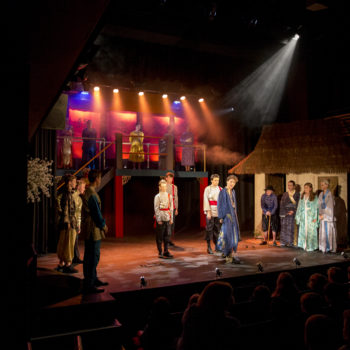
2007
Theatre upgraded
Read More2007
The existing hall in Centre Block, which had long been used for theatrical performances underwent a complete refit including new tiered seating, a full lighting rig and new teaching spaces. The new facility was renamed The Baughan Theatre, in recognition of the significant input of the then Chairman of Governors, Bryan Baughan.

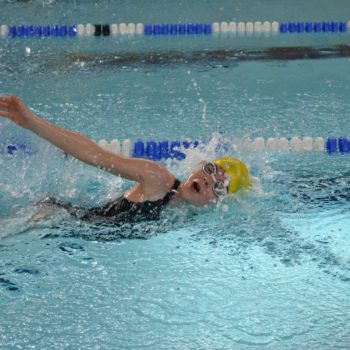
2008
New Swimming Pool
Read More2008
In the area next to the Maths and ICT block, the existing outdoor swimming pool was replaced with a new 25m indoor facility.

2010
100 Years with UWS
Read More2010
The School celebrated 100 years of association with the United Westminster Schools Foundation at a ceremony in Westminster Abbey.
2018
New Reception
Read More2018
The need for a more centrally-situated Reception centre saw the redevelopment of the School Shop (the former Founder's Day Room) so that visitors had a clearly visible facility in The Quad. A new extension at the rear of the building houses the School's Bursary.
2019
Foundation merger
Read More2019
The 146-year-old close partnership between the United Westminster Schools Foundation and the Grey Coat Hospital Foundation resulted in a formal merger between the two bodies, to create the United Westminster and Grey Coat Foundation.
2022
Boarding Refurbishment
Read More2022
St Margaret's and Westminster Boarding Refurbishment
2023
New Nursery Building
Read More2023
New Nursery Building opened at Prep School
2024
Strategic Plan launched
Read More2024
'To 450 and Beyond' Strategic Plan launched.